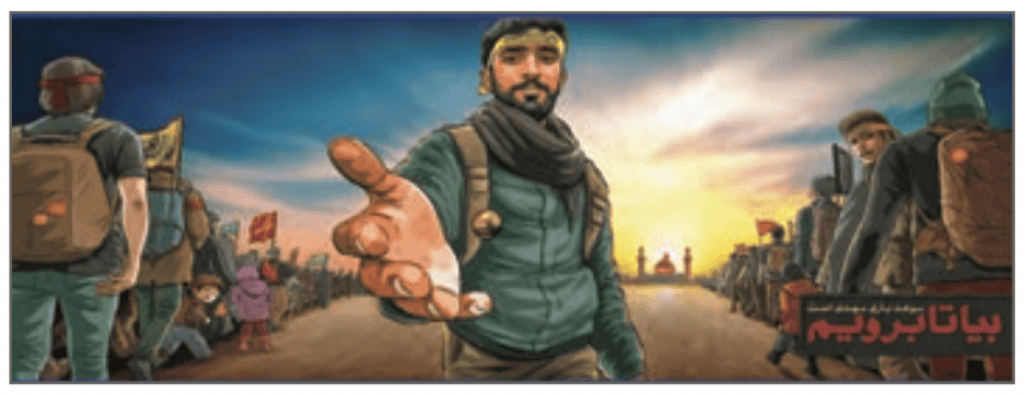
The United States Government has routinely identified Iran as a state sponsor of terrorism, going back to the 1980s and across successive American administrations. Furthermore, Tehran’s efforts to export its revolution are widely known, as are its shameless promotion of antisemitic propaganda, such as cartoon contests to encourage Holocaust denial.
But comparatively little attention has been paid to Iran’s incitement of hatred, extremism, and terrorism in its official government textbooks. Whereas credible and comprehensive studies of incitement in the Saudi state curriculum have been published each one of the last five years, for example, the last such expert study of the Iranian curriculum was only published in 2016.
For this reason, ADL (Anti-Defamation League) just published a new monograph that surveys Iran’s official textbooks from the 2020-21 school year, the full text of which is downloadable here from ADL’s website.
While identifying extremist content in the Iranian curriculum is by no means surprising, some of the forms that such extremism takes are instructive. Furthermore, documenting the pervasive and ongoing nature of such educational indoctrination provides information that can be of use for informing policymakers, intelligence officials, journalists, and the public debate. It also underlines that the challenges posed by Iran’s policies to the international community extend well beyond just a single issue area and offer no easy answers.
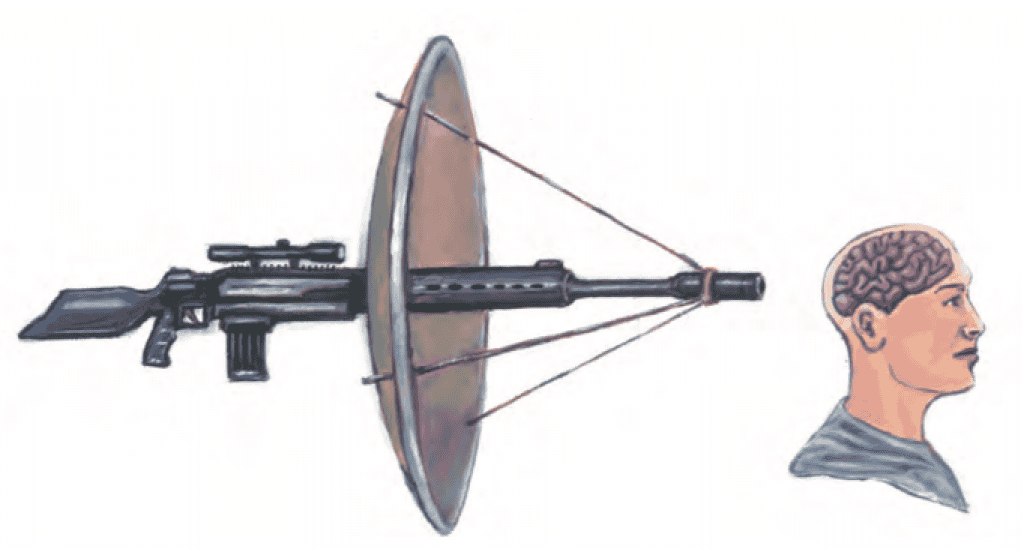
Image from a current Iranian state textbook, in a lesson titled “Cultural Attack”. Grade 9, Heaven’s Messages: Islamic Education and Training, p. 105
Demonizing America
The current Iranian curriculum teaches that Tehran is the Islamic faith’s standard-bearer in an existential and “perpetual battle” against imperialism, with the United States of America today at its forefront. Israel, Europe, and Arab states are seen as accomplices in this global fight, with both the Soviets and Great Britain also cited as notable historical enemies. This construct is used in the curriculum in order to justify the regime’s ongoing sponsorship of international violence.
For example, current Iranian textbooks for middle school and high school grades teach that U.S.-led sanctions against Iran (even those that are multilateral and approved by the United Nations) merely represent a “satanic plan” to target Islam itself and follow in the footsteps of tribesmen who imposed an economic siege on the Prophet Muhammad and his followers in the 7th century.
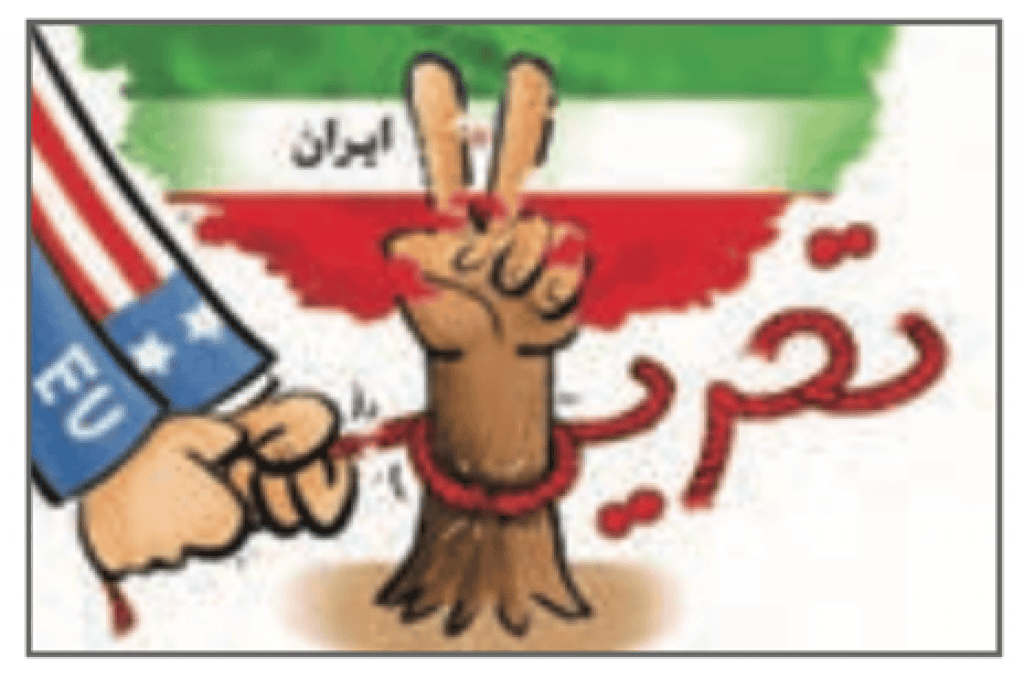
Image from a current Iranian state textbook, Grade 10, Defense Preparation, p. 120. The text in red translates to “Sanctions”. The text in black says “Iran”.
The curriculum also teaches that Sunni terrorist groups such as the Islamic State are in fact American fabrications to weaken and defame true Islam, in conspiratorial partnership with America’s allies in the region, including both Saudi Arabia and Israel. They teach that America also seeks to subvert Iran and other Muslim societies through a “soft war” or “cultural attack” of spreading drug use, fornication, anti-Islamic films and video games, in a role that the textbooks say was historically played by Freemasons and Christian missionaries as a pawn of the West.
This year’s textbooks even added in new conspiracy theories about the coronavirus, claiming that “foreign media” tried to stop Iranians from attending crowded regime rallies in February 2020 by exaggerating the COVID threat and that runs on medical goods were created by Western media.
Militancy and Terrorism
Perhaps the most striking use of militant language in the Iranian curriculum was actually its reference to the country’s nuclear program. The curriculum also glorifies both child soldiers as well as known terrorists.
Notably, the regime’s 11th grade textbook History of Contemporary Iran proclaims that “in spite of the constant conspiracies and oppositions of the enemies of the Islamic Republic, Iranian nuclear scientists have achieved many successes.” Immediately afterwards, the text proceeds with a quote from Iran’s previous Supreme Leader, Ayatollah Ruhollah Khomeini, that cloaks its reference to the nuclear program in militancy: “I advise the dear nation of Iran to know that you have achieved a blessing with your great jihad and the blood of your bounteous youths.”
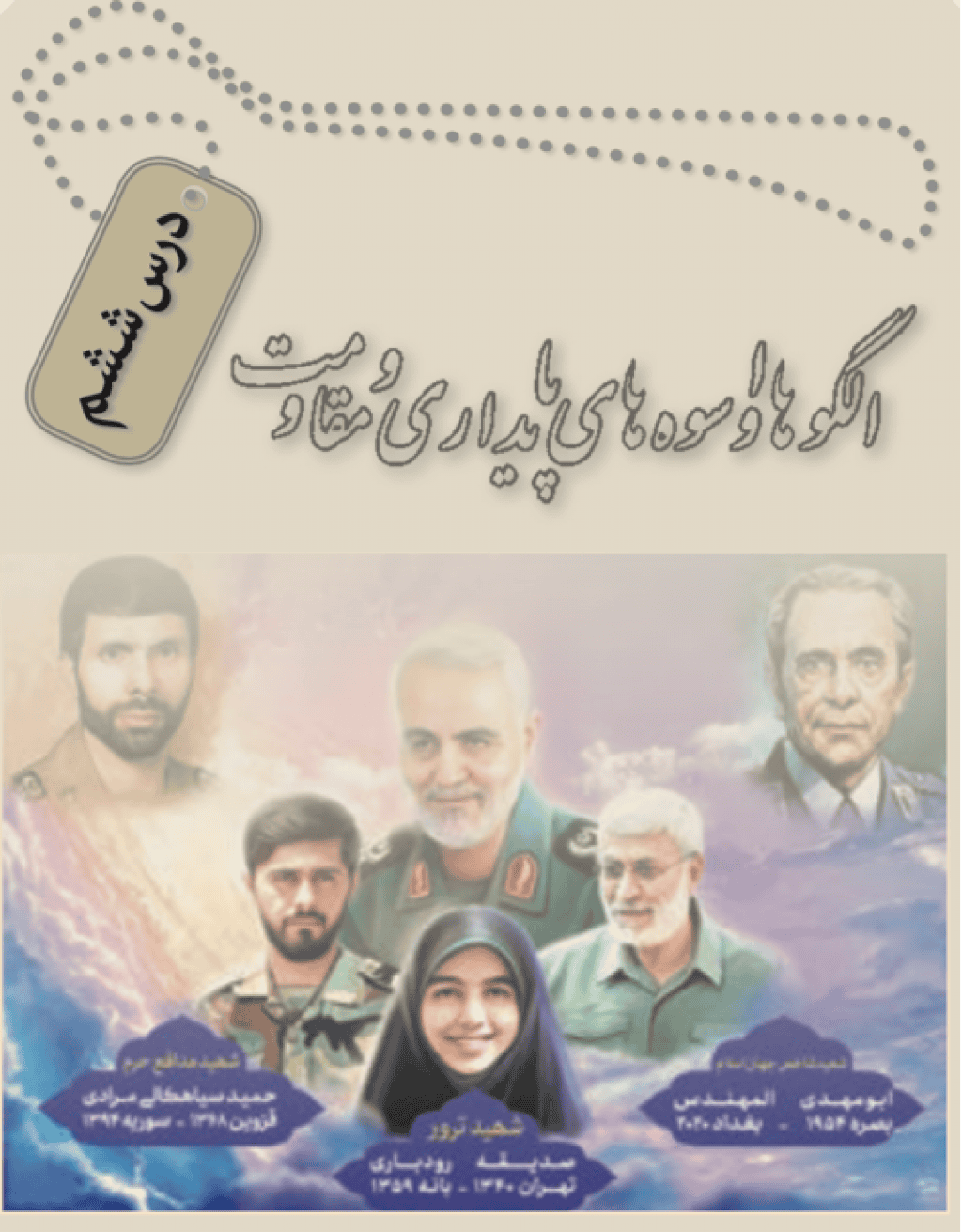
Image from a current Iranian state textbook, Grade 10, Defense Preparation, p. 45. The text on top translates to “LESSON 6: TEMPLATES AND MODELS OF STEADFASTNESS AND RESISTANCE”. Among the six depicted in the graphic are Qassem Soleimani (center top), who led the IRGC’s Quds Force, and Abu Mahdi al-Muhandis (second right), who led Kata’ib Hizballah in Iraq. Both organizations are U.S.-designated Foreign Terrorist Organizations, and both men were personally under U.S. sanctions at the time of their deaths in 2020.
One theme that was actually updated in the 2020-21 textbooks is the curriculum’s longstanding emphasis on known terrorists as martyrs, which was revised in several places to include references to the late Qassem Soleimani, commander of Iran’s Quds Force, as a “martyr” and a “model.” Also glorified in this regard are the late terror chief of Lebanese Hezbollah Mustafa Badreddine and late commander of Kata’ib Hezbollah in Iraq, Abu Mahdi al-Muhandis.
Additionally, the Iranian curriculum continues to present child soldiers, primarily from the Iran-Iran War, as contemporary role models. For example, the texts show children wielding firearms and rocket launchers, encouraging recruitment and martyrdom in the service of the regime’s Basij paramilitary, and quoting a child soldier from the Iran-Iraq War who encouraged youths to protect the regime “until the last drop of blood.”
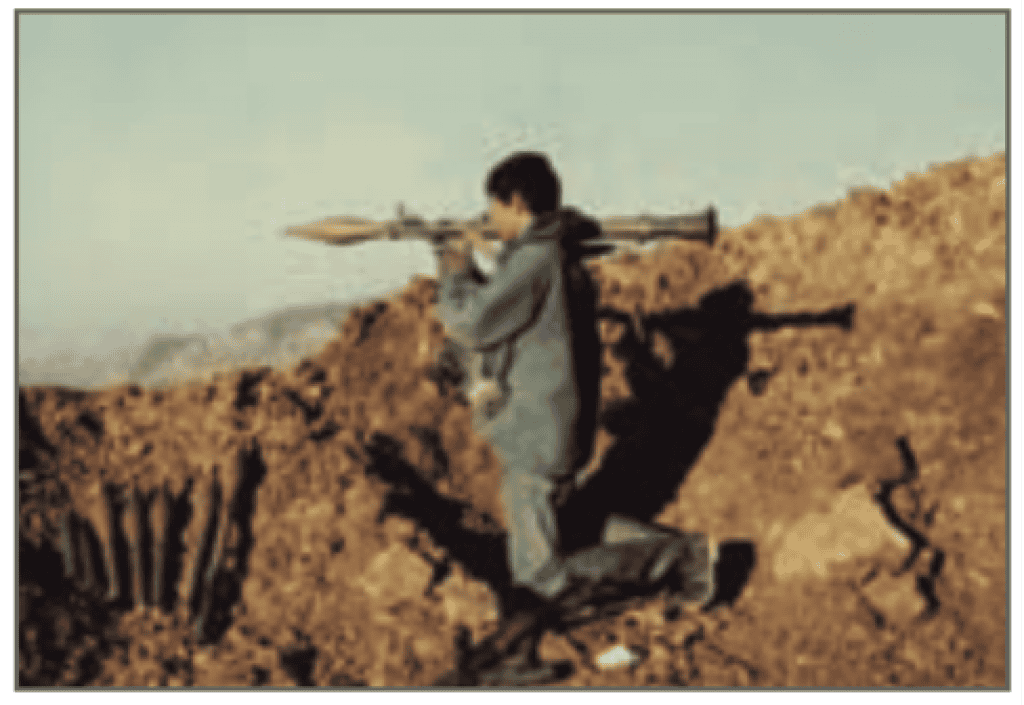
Image of what seems to be a child holding a rocket launcher, in a textbook lesson titled “A Culture of Sacrifice and Martyrdom” in a current Iranian state textbook, Grade 10, Defense Preparation, p. 37.
The books also teach students how to assemble Kalashnikov assault rifles and encourage them to learn about cyberwarfare. While lip service is given to the notion of achieving peace through strength, the emphasis is clearly on preparing Iran’s next generation for what is portrayed as inevitable war, instead of any possibility of peace.
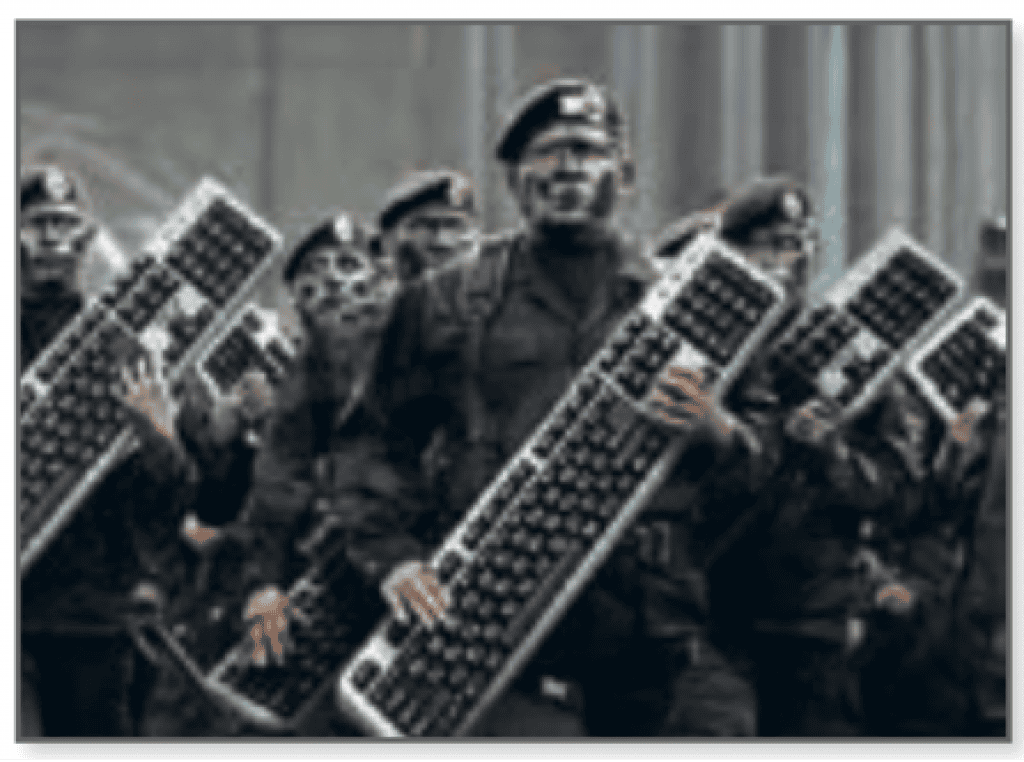
Graphic from a current Iranian state textbook in a lesson on cyber warfare. Grade 10, Defense Preparation, p. 126.
Advocating Hatred and Regime Overthrow
Although the Government of Iran routinely professes that its opposition is strictly toward the State of Israel or the ideology of Zionism, that principle is contradicted by the textbooks that it produces for schoolchildren. Positive blandishments are used to describe the loyalty of the community of Jews that remain in Iran, as well as anti-Zionist Jews outside of Israel, but otherwise all Jewish people who identify as Zionists are described categorically as “the enemies of Islam.” Furthermore, Jews are consistently depicted as evil, greedy, and hostile schemers in the curriculum’s history textbooks, covering periods before the development of modern Zionism.
Also of note is that the Iranian curriculum applies these sorts of messages to other countries and minority groups as well, not just to the Jews. For example, Baha’is come in for particular demonization in the textbooks. Their faith is described as a “deviant sect” created as “one of the tricks of colonialism to destroy the cultural foundations of Islamic countries,” as well as “creating unrest and insurgency.” The curriculum also suggests that Baha’is, Buddhists, and Sunni Muslims who adhere to the Salafist creed of Wahhabism may also be physically unclean.
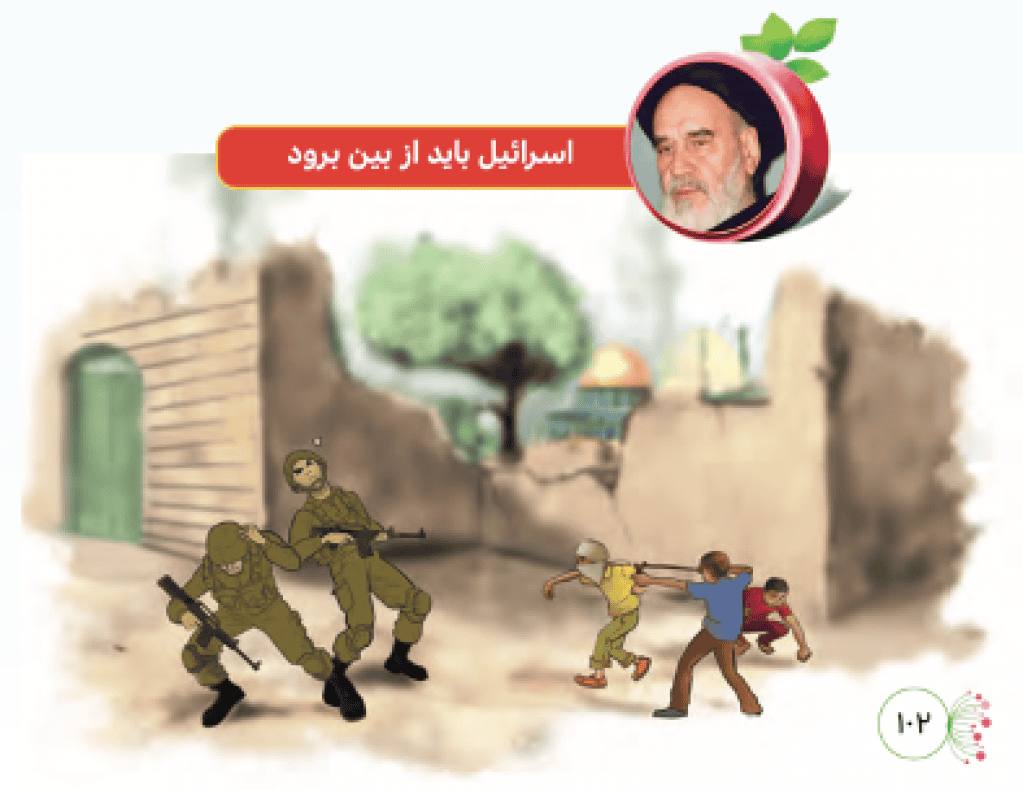
Graphic from a current Iranian state textbook with the quotation “Israel Must be Wiped Out,” from the deceased founder of Iran’s Islamic Republic, Ayatollah Ruhollah Khomeini. Grade 5, Heaven’s Gifts: Islamic Education and Training, p. 102.
Additionally, the curriculum calls for overthrowing two regimes in particular, one Jewish and one Arab. Textbooks repeat Khomeini’s teaching that “Israel must be wiped out,” in addition to glorifying the chant “death to Israel.” They also advocate the overthrow of the Bahraini monarchy, lamenting that “the Bahraini revolution has not yet come to fruition.”
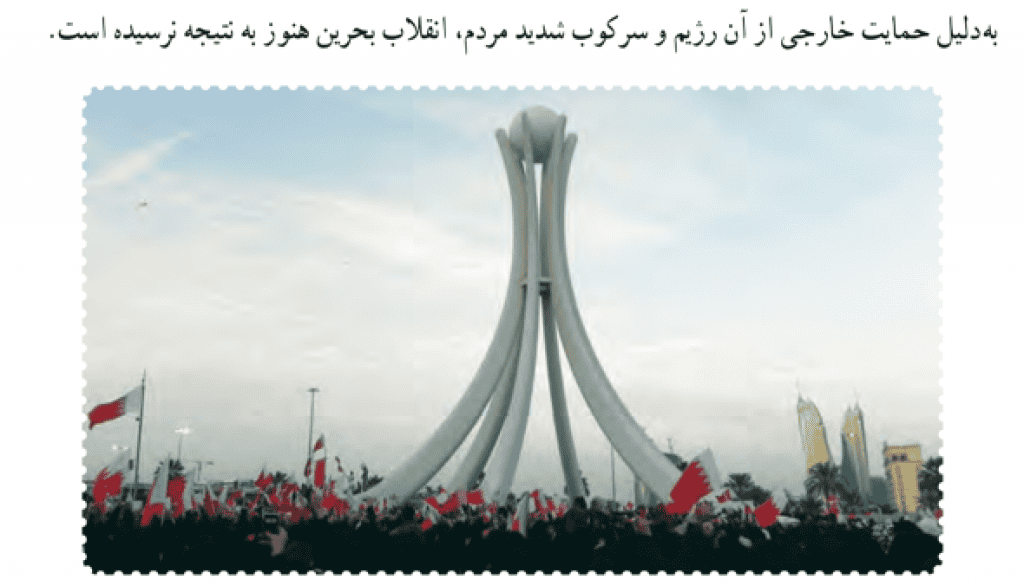
Graphic and text from a current Iranian state textbook which depicts Pearl Roundabout in Manama and states that “due to foreign support of the regime and severe oppression, the Bahraini revolution has not yet come to fruition”. Grade 11, History of Contemporary Iran, p. 251.
Conclusion
While it is by no means surprising that the world’s largest state sponsor of terrorism incites hatred, extremism, and terrorism in its government-published school textbooks, it is still quite significant. They confirm that Tehran has not only continued to teach such dangerous content since the last time it was documented nearly half a decade ago, they also demonstrate new ways in which such content has been added or adapted in response to recent events, including the war in Syria, the killing of Qassem Soleimani, and even the global pandemic. Such findings also emphasize the need for governments and civil society to address to the full array of harmful activities that the Government of Iran pursues, as well as the long-term difficulty of doing so.







